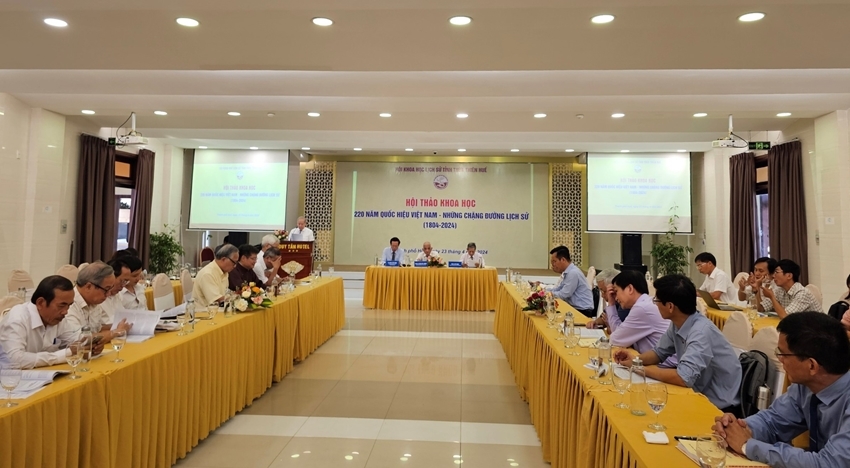 |
| An overview of the conference |
Throughout our nation's history, the name of Vietnam has existed for a long time, but it was not the official national name. Officially, it was not until the year of Giap Ty, on the day of Dinh Suu, the 17th day of the second month in the Lunar calendar (ie March 28, 1804), when Emperor Gia Long held the Khanh An ceremony at Thai Mieu Temple inside the Imperial City to name the country Vietnam. In his proclamation, the Emperor affirmed: "When emperors establish a nation, they must first respect the national name to demonstrate the unity, and change the national name to Vietnam, to build a great foundation and pass it on for generations to come. In all national affairs related to the national name and correspondence with foreign countries, Vietnam shall be used as the name of the country, and the old name An Nam shall no longer be used."
During the Nguyen Dynasty, the national name of Vietnam was maintained for nearly four decades under the reigns of two emperors, who were Gia Long and Minh Mang. In the 19th year of Minh Mang's reign (in 1838), the Emperor changed the national name from Vietnam to Dai Nam.
In 1945, the August Revolution succeeded, the Nguyen Dynasty ended. On September 2, 1945, President Ho Chi Minh, in the Declaration of Independence, declared the establishment of the Democratic Republic of Vietnam - now the Socialist Republic of Vietnam.
According to Mr. Phan Tien Dung, Chairman of the Provincial Historical Science Association, there are over 20 papers by scholars and researchers selected by the organizing committee for publication in the conference record. The papers focus on the study of the national name of Vietnam through historical documents as well as the country's development through different periods.
